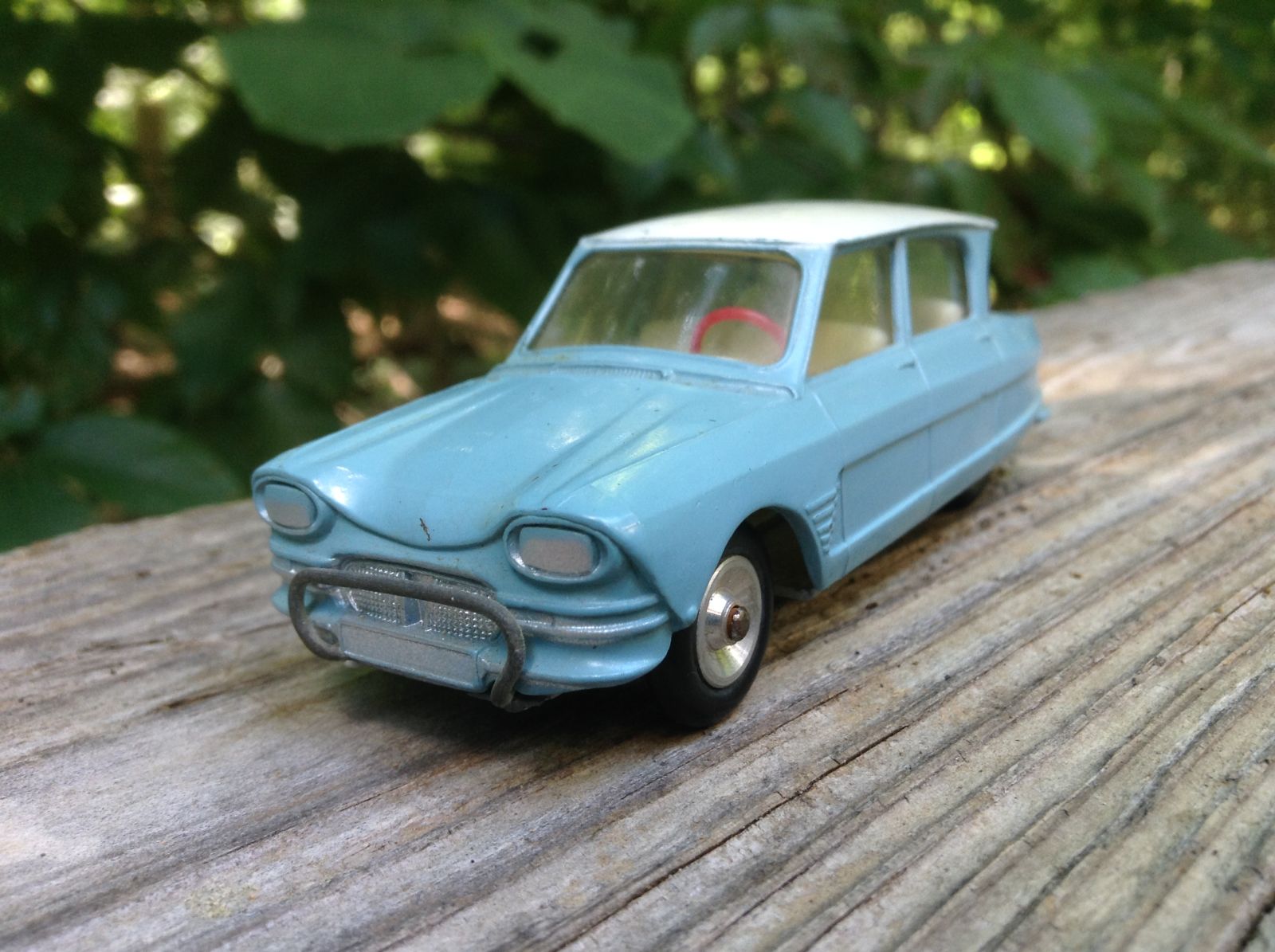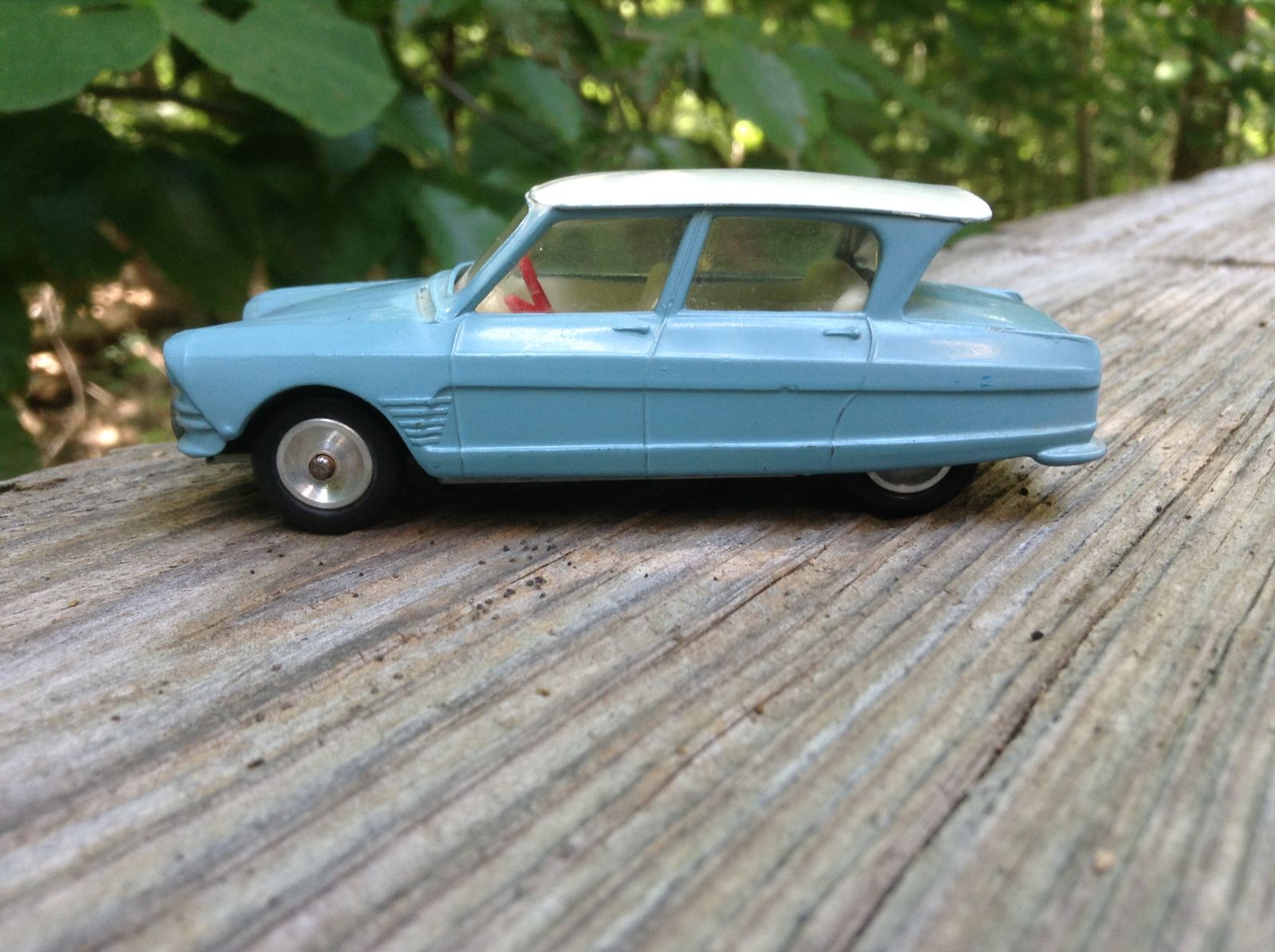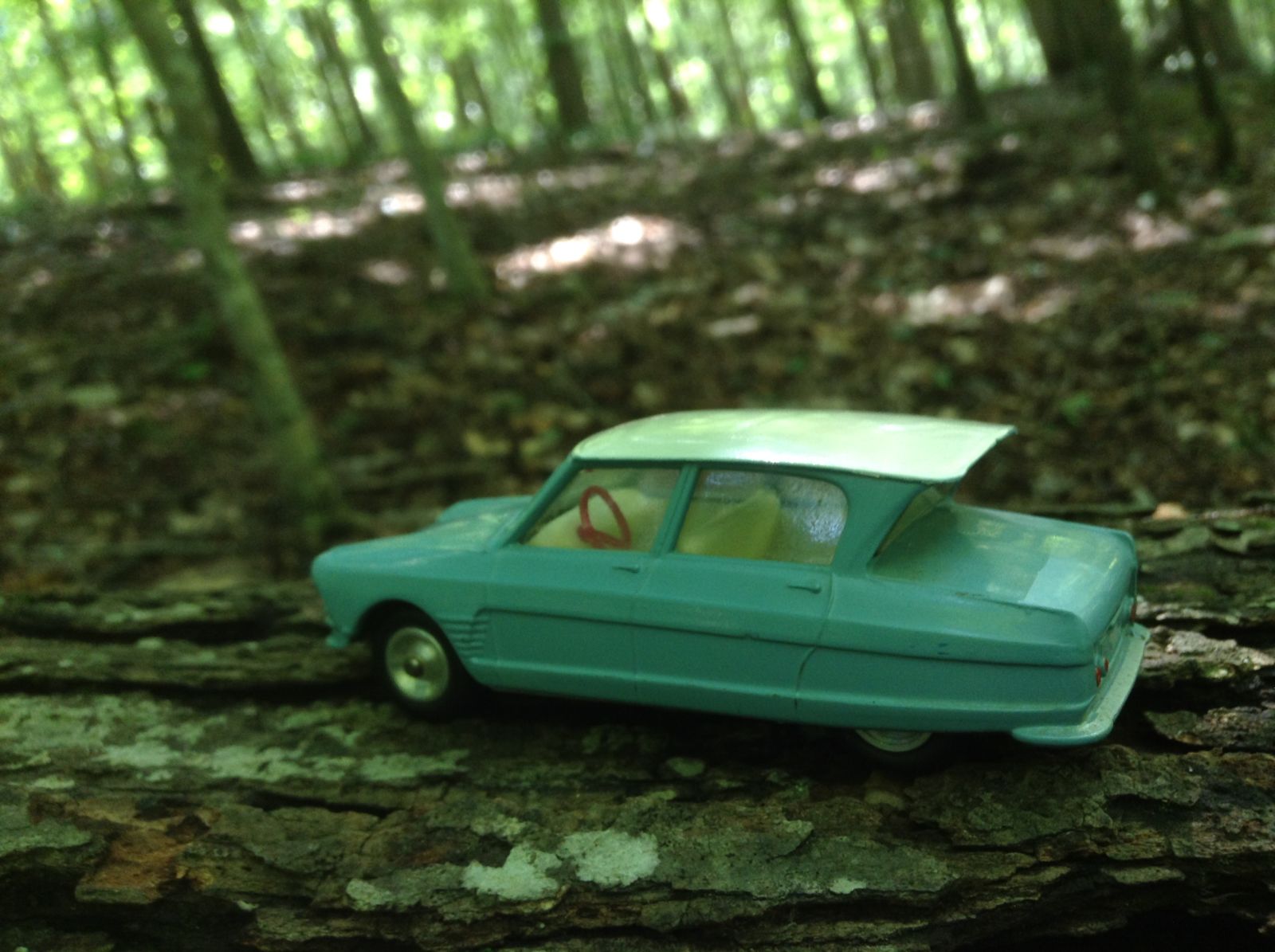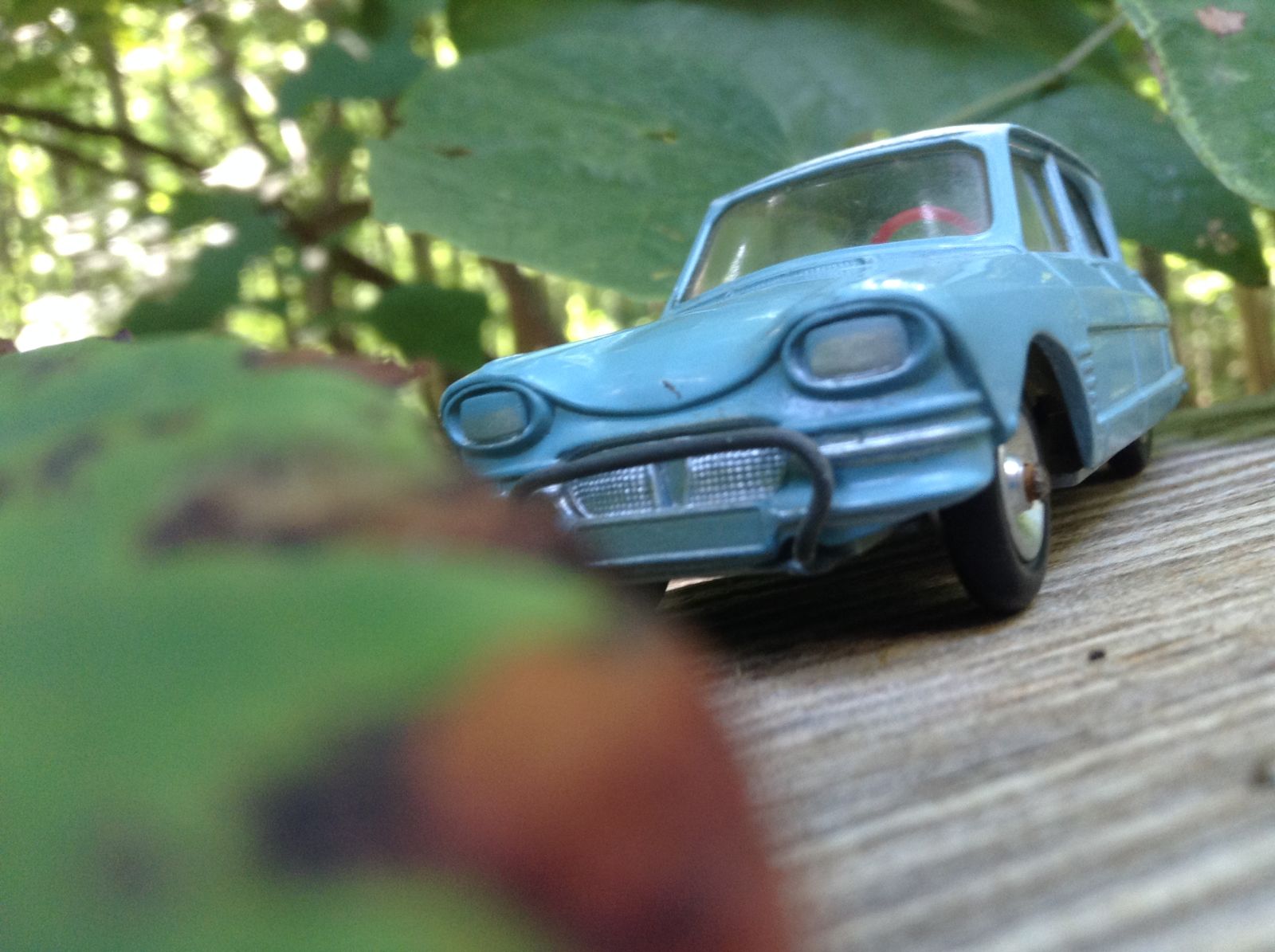
We all have bad ideas sometimes. That’s okay if we don’t affect much. But when an huge car company manages to dramatically misguess what the public wants by releasing a very bad idea upon the public, then it’s a bigger problem.

The Citroen Ami is one of my favorite cars, and many of you other LaLDers love it as well. However, as much as we love it, it was a bad idea. To understand why, you need to know the history of the Citroen brand.

In 1934, Citroen was nearly bankrupt as they strained under the cost of developing the Traction Avant, so named for it’s front wheel drive configuration, which was very unusual for the the 1930s, as was it’s unibody construction. This meant an all new factory, developing new tooling, etc, as well as the extensive marketing costs associated with the all new model. Citroen filed for bankruptcy, but their largest creditor, Michelin, stepped in and took control of the company. The Traction Avant was a success, not just in sales, where is exceeded it’s goals, but also in achieveing aclaim for Citroen and Michelin and winning awards, and creating the Citroen identity of advanced engineering. But this post isn’t about the Traction Avant.

The surplus of capital from the Traction Avant, achieved mainly by it’s lllooonnnggg production run (1934-1957) meant that Citroen had money to develop it’s next car. Since it had large and midsize cars, the. obvious choice was to go small. This led to the 2CV, which had much of the same success as the Traction Avant; not only did it win awards and sell in large amounts (3.8 million), but, just as the Traction Avant had brought technological sophistication to the upper classes, the 2CV brought it tomthe lower classes. There hasn’t been another car that brought this kind of a technological update to the masses, excluding, though it’s hated around these parts, the Toyota Prius.

The 2CV was powered by a boxer two cylinder, the basis for the engine that would be found in the Ami. The original engine had only 375cc, but it was enough to power the super light 2CV. The 2CV’s main party trick was it’s suspension; basically, the suspension design featured two long coil springs inside of a cylinder mounted horizontally (below the doors of the car), linked to the independently suspensed wheels via a system of moving cranks and rods. The cylinder which housed the springs ALSO had springs attached to it, allowing for it to move. Basically the springs would move inside the cylinder, sending movement throught the crank and rods system, providing a suspension. BUT the culinder which housed these springs was also mobile, allowing for even greater suspension movement. There’s more to it than that, but that’s the gist.

But, despite all of these advancements, a problem was arising. In 1960, Renault introduced a new car, called the 4. It was a blatant rip off of the 2CV, but featured a stylish new body and a bigger engine. It not only appealed to the lower end of the market like the 2CV, but to the middle class. At the start of 1961, Citroen didn’t have a midrange car; their only models were the high end DS, the low end 2CV, the HY van, and the sales flop UK only Bijou. Fortuantely, Citroen had also realized their Achilles heel, at the same time as Renault. They got to work on a midrange car, and got there four months ahead of the 4.

You know the song “Lean on Me”, by Bill Withers? One of the main lyrics is “sometimes in our life, we all need a friend/we all need somebody to lean on.” Well, Citroen REALLY needed someone to lean on. If the niche wasn’t covered, they could lose a craptom of sales to Renault, who had a bigger range and more capital. Thus, they made a friend: The Ami. Contrary to popular belief, the Ami wasn’t created to replace the 2CV; that was the Dyane. The 2CV was still selling well, and Citroen only wanted to create a midrange car. And the Ami wasn’t in response to the Renault 4, it was released four months ahead of it. But you have to wonder if Citroen could have created a more market appealing car if they had taken those four extra months.

There were two versions of the Ami; the 6 sedan and the wagon, known as a break. Both had . . . unique styling. The front end had some interesting styling, but that wasn’t originally planned. The Ami was the first car with rectangle headlights, but French safety authorities though they were too low on the prototype, so the front end was restyled to meet safety standards. Thanks, socialism!

On the 6 break, the styling eccentricities ended at the front, relatively speaking. However, the sedan had the famous raked rear window, which was purely a misjudging of the market on Citroen’s part. The styling had become popular, namely beimg shown on the Mercury Turnpike Cruiser and the Ford Anglia, but Citroen didn’t anticipate how quickly it would become passe. You would think some good pollimg would’ve stopped that, but trends are hard to predict. It also served to maximize both interior room and trunk space on a small (midsize by Euro standards on the time) car.

The Ami was originally powered by a larger version of the 2CV boxer twin, with a grand 602cc! These made acceleration . . . leisurely, as the little 2 cylinder air cooled motor had to push 1,389 pounds unloaded. Top speed was an optimistic 76 mph, with a zero to FIFTY time of 27.1 seconds! The famous 2CV suspension was in the Ami, which wasn’t surprising considering that the Ami was essentially a 2CV in a suit. Citroen determined the main problem with the 2CV was it’s styling and lack of options, so they determined that putting a new, slightly larger (three inches to be precise) body with an upgraded interior would fill the midrange gap. The Ami even had the same wheelbase as the 2CV! And it worked! Well, sort of.

The Citroen Ami was produced from 1961-1979. Citroen sold 1.5 million Amis, which is a sucessful car by most standards. But it wasn’t. Remember how much I emphasized that the Ami was supposed to be Citroen’s midrange car? That was truly important, and the Ami failed at it. Dramatically. The Ami did nothing to sap away the sales of the Renault 4, and later the Renault 16. The Ami mostly sold to people who would’ve bought 2CV’s, but wanted more power. Or comfort. Or space. So, Citroen was right a 2CV in a suit being marketable, but not to the right people.

Citroen tried several more times to build a midrange car. Panhard, who had been building 2CV vans for several years under contract out of desperation, was bought by Citroen in 1963 for a) their capacity to build even more vans and b) their expertise in building midsize cars. But the Panhard route was fruitless; the PL24, Panhard’s only modern car, wasn’t offered as a sedan for fear of stealing sales from the DS. And the PL17 was too outdated to be competitive. Meanwhile, the Renault 4 was selling like hotcakes, and spreading it’s hatchback design around the midrange segment. Soon, the BMC 1100 cars were introduced, with hatchback. And guess which car introduced the hatchback in 1958? The 2CV, although it wasn’t a full hatch like the 4's.

In 1968, Citroen introduced an update to the Ami 6, known as the Ami 8. The sedan, with, it’s unique roof, was replaced with a fastback, with a hatchback trunk. The front end was revised, creating it presumably as Citroen had intended it. The wagon remainded, pretty much the same as ever. In 1973, Citroen made the Ami avalible with the four cylinder from the GS, a midrange car with aerodynamic styling, modern features, and the ability to hold four people. The GS was what the Ami wanted to be, only real.

The Ami was made until 1979, but it’s true swan song happened 10 years earlier. Citroen had partnered with NSU way back in the mid ‘60's to develop a rotary wankel engine. They actually did it, producing the M35, an Amimbased coupe with a rotary. They produced aroud 1500 and leased them to customers for testing, with overall positive feedback. But the cost of producing the engine was too much, especially combined with the high costs Citroen had put into developing it, as well as the cost of the Maserati’s Citroen had been producing since 1968. All of these costs were too much for Citroen, and they went bankrupt in 1974, and were bought by Peugeot. In a way, the Ami was a huge part of Citroen’s demise, the birth of PSA, and the French government today.

This model is a Citroen Ami 6 sedan by Solido in 1/43 scale. I bought it and a Solido Ami 6 Break online for $20. It has some playwear, but it’s in good condition overall. I took outside for some ORAT shots this French Friday.

Sources:
http://www.citroenet.org.uk/passenger-cars…
http://www.curbsideclassic.com/curbside-class…
http://www.curbsideclassic.com/blog/citroen-a…
http://www.curbsideclassic.com/curbside-class…
https://en.wikipedia.org/wiki/Citro%C3%… (used for stats)